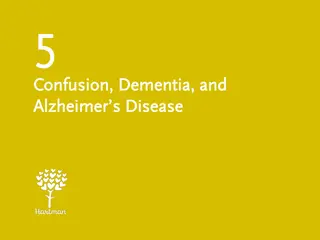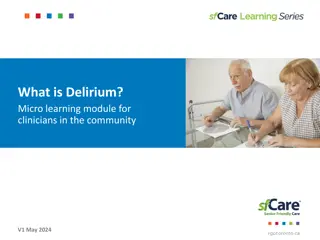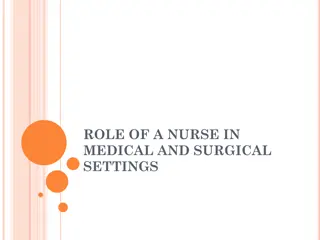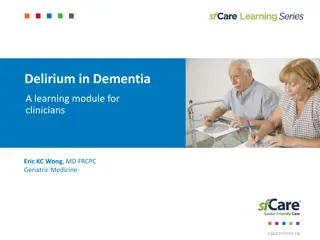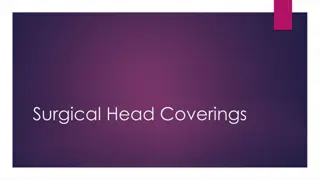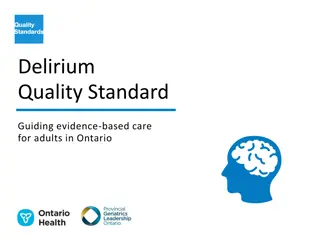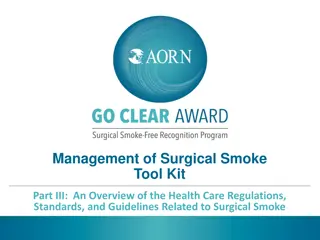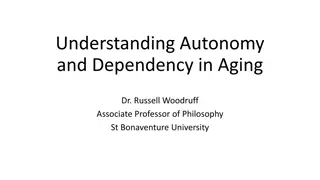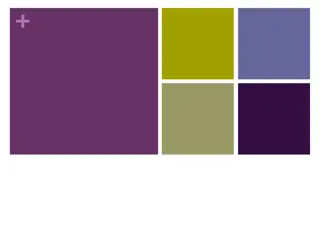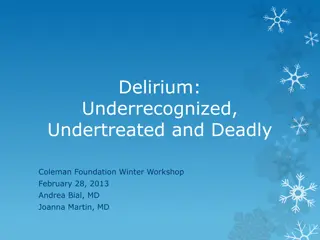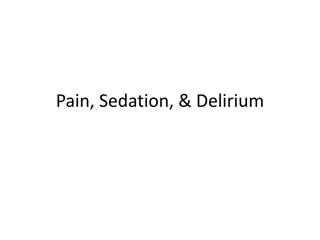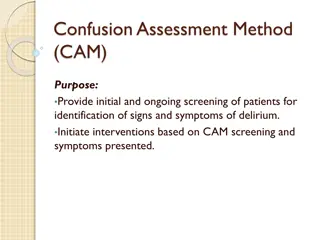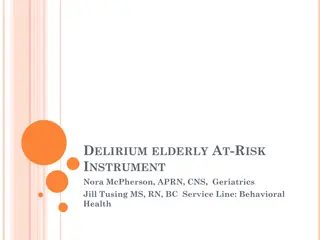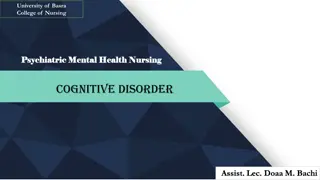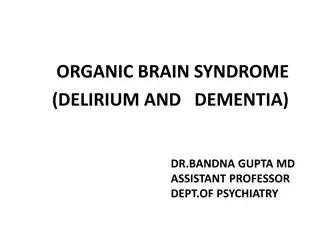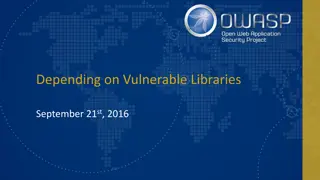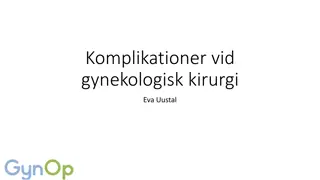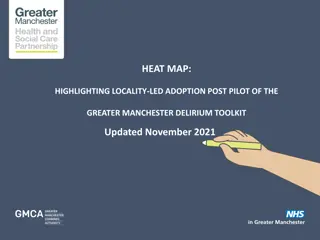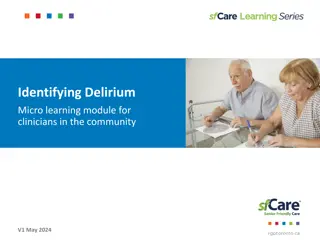Enhancing Delirium Management in Surgical High Dependency Patients 65 and Over
Improving early identification and management of delirium in surgical high dependency unit (SHDU) patients aged 65 and over led by Mathew McBean and Gillian Bolton. Data collection, education initiatives, and pharmacological management guidelines were implemented, resulting in increased staff confidence and earlier delirium identification. Challenges and lessons learned were noted, with ongoing progress towards achieving project goals.
Download Presentation

Please find below an Image/Link to download the presentation.
The content on the website is provided AS IS for your information and personal use only. It may not be sold, licensed, or shared on other websites without obtaining consent from the author. Download presentation by click this link. If you encounter any issues during the download, it is possible that the publisher has removed the file from their server.
E N D
Presentation Transcript
Improving Early Identification and Management of Delirium in Surgical High Dependency of Patients 65 and Over. Team Leaders - Mathew McBean and Gillian Bolton Team Nursing and Medical Staff of SHDU
Data Collection Data was collected on Newly admitted patients aged 65 and over to provide a baseline score/ identify those with delirium early. Initial data of patients admitted to SHDU showed that between 30-90% had a positive 4AT score.
Education Initial improvements were made by the induction of the 4AT Tool to SHDU staff to help provide an easy identification tool for Delirium. SHDU nursing staff were also asked to complete Delirium Learn Pro module. Staff teaching sessions were undertaken to improve management of patients in an attempt to prevent delirium from occurring and ultimately reduce harm to those who were becoming unmanageable.
Pharmacological Management A guideline was developed for pharmacological management of patients especially for those who are acutely unwell requiring inotropic support, have tracheostomy and any other invasive medical treatment. The guideline is currently still under review but hopes to be implemented once SHDU Lead Anaesthetist has made any amendments The work regarding delirium will continue within SHDU but in a new phase as this NES project comes to a close.
Progress We have made good steps toward our intended goal which is to improve management and early identification of delirium. Benefits Staff are more confident in dealing with delirious patients. Patients are being assessed faster by medical teams and having delirium identified earlier. Lessons learned. Early cooperation from staff needs to take place with a method to ensure long term buy in however still unsure how to achieve that also need to involve senior medical staff. Learned how to implement change in a nursing setting. Unintended consequences As were monitoring data from the unit, one thing we looked at was staffing levels and found that ( % of staff moved in a month) which also affected our ability to be able to work on the project. Anaesthetist wanted us to look at whether or not we could also establish if medication management was initiated more to patients at times when there was less staff levels however at this point have been unable to do this. Have used recourses such as GAANT chart, Benefits realisation plan, PID and used the PID and used the knowledge network for evidenced based research. The master classes themselves were very useful in giving advice and helping us focus our project, it also gave us allocated time to study and work toward the project outcomes.



